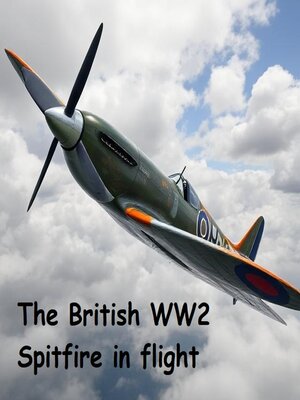
Sign up to save your library
With an OverDrive account, you can save your favorite libraries for at-a-glance information about availability. Find out more about OverDrive accounts.
Find this title in Libby, the library reading app by OverDrive.



Search for a digital library with this title
Title found at these libraries:
| Library Name | Distance |
|---|---|
| Loading... |
The Supermarine Spitfire is one of the most iconic fighter aircraft in history, synonymous with British resilience and victory during the Second World War. Designed by R. J. Mitchell and built by Supermarine, a subsidiary of Vickers-Armstrong, the Spitfire was developed in the mid-1930s in response to a call for a new modern fighter for the Royal Air Force (RAF). Its sleek design, elliptical wings, and powerful Rolls-Royce Merlin engine made it a formidable opponent in the skies.
First flown in 1936 and introduced into service in 1938, the Spitfire was not initially produced in large numbers. However, as the Second World War intensified, particularly during the Battle of Britain in 1940, its role became pivotal. Though it was often paired with the more numerous Hawker Hurricane, the Spitfire gained fame for its superior speed, agility, and advanced engineering. Its aerodynamic design allowed for tight turns and impressive climb rates, giving it an edge in dogfights against the German Messerschmitt Bf 109.
During the Battle of Britain, the Spitfire became a symbol of hope and determination. While Hurricanes actually shot down more enemy aircraft due to their greater numbers, it was the Spitfire that captured the public imagination. Pilots often preferred the Spitfire for its refined handling and performance at higher altitudes. It played a crucial role in maintaining air superiority over Britain, ultimately helping to thwart Hitler's plans for invasion.
One of the Spitfire's great strengths was its adaptability. Over the course of the war, it was continuously upgraded with more powerful engines and advanced armament. The early Mk I and Mk II variants were gradually replaced by Mk V, Mk IX, and eventually Mk XIV models, some of which were equipped with the newer Rolls-Royce Griffon engine. These developments ensured the Spitfire remained competitive against evolving German aircraft such as the Focke-Wulf Fw 190.
Spitfires served in nearly every theatre of the war—from Europe to the Mediterranean, North Africa, and the Pacific. They performed a wide range of roles beyond fighter interception, including reconnaissance, ground attack, and even carrier-based operations in the naval Seafire variant.
Production of the Spitfire continued until 1948, with over 20,000 built—more than any other British aircraft. Its longevity and adaptability were unmatched, and it remained in service with several air forces around the world into the 1950s.
Beyond its technical achievements, the Spitfire has earned a lasting legacy in British culture. It represents not just an engineering triumph, but also the spirit of defiance in the face of overwhelming odds. Veterans and aviation enthusiasts continue to celebrate the Spitfire at airshows and in museums, where it remains a potent reminder of a nation's resilience during its darkest hours. Today, the Spitfire is more than a machine—it is a legend in flight.







